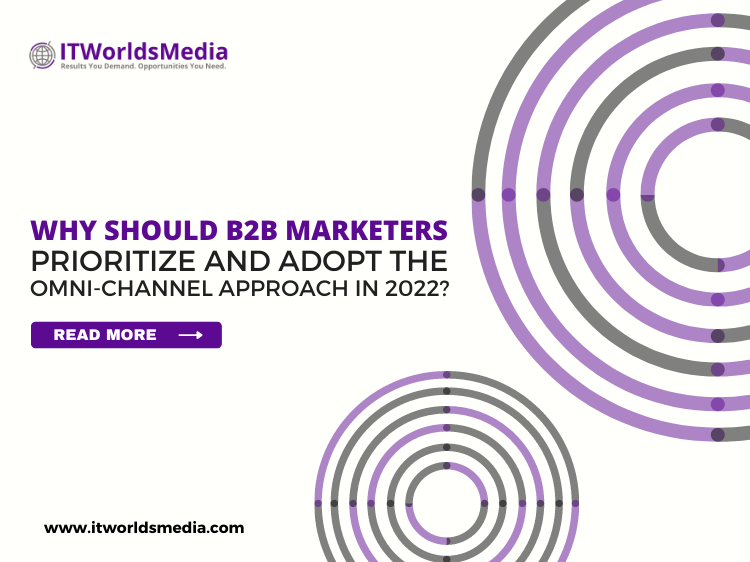 2022-06-28
2022-06-28
Why should b2b marketers prioritize and adopt the omni-channel approach in 2022
Many things have changed since 2020 and the overall approach towards sales and buying habits of customers has gone through a paradigm shift in the b2b market. Omni-channel approach is one of those changes that have taken over the b2b market today. So what is this approach and why it is important today? Let us find out through this blog and some other aspects of using multiple channels for b2b sales and marketing!
Over the past two years, almost all businesses have gone digital giving way to online interactions, conferences and sales. Marketers have adopted new approaches and new technologies to adapt to the situation and in a bid to capture more leads and to explore maximum opportunities; marketers have also embraced the multi-channel approach too!
Buyers choose multiple channels too-
Amid all these changes, it was not just the marketers who had to embrace change, it was also the customers who had to face a lot of changes affecting their buying approach and impacting their buying habits and purchase decisions. As against the traditional sales and marketing channels that the customers were accustomed to, they now started to prefer the multi-channel approach.
It means that customers are now happy to explore more options through varied channels before they reach their purchase decision. This also means that marketers need to be more aware of the changing needs of the customers, to know where to find them, and create customized solutions and be present on multiple channels to generate demand and leads. This trend also means content assets need to be paid attention to in every stage of the funnel and different content needs to be created for different channels.
More channels means more competition-
Multi-channel approach also means newer channels, newer domains and platforms which brings along with it more competition. This is a challenge for marketers to be present on varied channels with different content assets and to attract leads amid more competitors than usual. But this challenge can be transformed into opportunities by fine-tuning their strategies, services and products. Since buyers have also adopted a multi-channel approach before making their purchase decisions, it also means that they will have more choice and if they are not satisfied by the services of one vendor they can easily shift to another vendor.
This is urging marketers to create better solutions and create interesting offers for attracting the right leads toward them over their competitors.
Intent data can help marketers-
This is exactly where intent data can be used and optimized to its best by b2b marketers. With the help of predictive intelligence derived from intent data and understanding the prospect better, marketers can choose the right channels that have the maximum possibility of attracting leads that will also convert faster. Instead of investing in all the channels at once, they can save their time, energy and money by investing in only specific channels to maximize their reach to the most potential buyers.
Conclusion-
Omni-channel sales and marketing is here to stay! It’s up to the marketers to make the best out of it and optimize the increased opportunities to find more leads and thus increase lead conversions accordingly.
